#HDPE & LDPE Bags
Explore tagged Tumblr posts
Text
Zubairi Plastics Reinforces Its Market Leadership with Premium HDPE Solutions
In the ever-evolving packaging industry, material matters. And few materials offer the resilience and versatility of HDPE—High-Density Polyethylene. Known for its incredible strength-to-density ratio, HDPE has become the gold standard for manufacturing robust, reliable, and eco-conscious packaging. At the forefront of this innovation stands Zubairi Plastics, a leader in delivering tailored HDPE packaging solutions for diverse industries across the UAE and beyond.
As industries seek packaging that balances durability with sustainability, Zubairi Plastics continues to invest in advanced production technologies to create high-quality HDPE products. Whether it’s bags, films, or sheets, their offerings are engineered for maximum performance under challenging conditions—moisture, weight, chemical exposure, and transportation stress.
What makes HDPE such a powerful material is its ability to be both lightweight and incredibly tough. This reduces material consumption without sacrificing strength, leading to more efficient and sustainable packaging outcomes. Zubairi Plastics uses food-grade and recyclable HDPE in many of its products, ensuring client needs are met with both safety and environmental responsibility in mind.
Zubairi Plastics' commitment to customization also shines through in their HDPE line. Clients can choose from a wide range of sizes, gauges, colors, and printing options, helping businesses brand themselves effectively through practical packaging. Whether you're in retail, logistics, agriculture, or pharmaceuticals, the adaptability of HDPE makes it a preferred choice.
Beyond functionality, Zubairi Plastics' strength lies in its customer-first approach. As a trusted HDPE manufacturer, they offer personalized consultation and rapid turnaround times, helping businesses stay ahead of the curve in a competitive marketplace.
For companies seeking packaging that ticks all the boxes—strong, safe, sustainable, and customizable—Zubairi Plastics' HDPE solutions represent the future of smart, responsible manufacturing.
0 notes
Text
https://www.mohantarp.com/points-consider-before-purchasing-grow-bags/
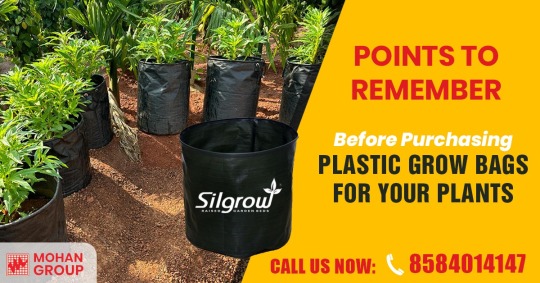
0 notes
Text
Tip #1:
The longevity and safety of food storage containers depend on the type of plastic. According to Michael Tunick, a research chemist in Drexel University’s Food and Hospitality Management Department, the numbers you want to see are 2, 4 or 5.
A 2 represents “HDPE, or high-density polyethylene, found in [items like] cooking oil bottles and milk jugs. It’s hard to break down and considered [food] safe,” Tunick said. He noted that a 4 stands for “LDPE, or low-density polyethylene, found in [items like] squeeze bottles and bread bags, considered safe and reusable.” A 5 is for “PP, or polypropylene, found in potato chip bags and yogurt containers, and safe to reuse,” he said. In addition to being food-safe, containers with the numbers 2, 4 or 5 are durable enough to be washed and reused multiple times.
37 notes
·
View notes
Text

Polyethylene Recycling
Polyethylene - either in the form of high density polyethylene (HDPE), low density polyethylene (LDPE), or another - is considered to be the mostly widely used plastic in the world. It is used to make plastic bags, food containers, cutting boards, etc. However, rates of plastic recycling as a whole are considered relatively low compared to other materials like paper or some metals and polyethylene is no exception to this. This is partially because most plastics, polyethylene included, cannot be infinitely recycled in the way of most metals. Recycling of polyethylene typically results in a decrease in strength of the resulting product, especially after repeated recycling.
Sources/Further Reading: (Image source - 2023 article) (AZO) (Beyond Plastics) (Wikipedia)
27 notes
·
View notes
Text
A Concise Guide to Resin Identification Codes for Plastic Recycling
This is a gentle reminder that World Environment Day will be 2 days from now. The theme for 2025 is: "Beat Plastic Pollution"! RICs are those little 3Rs symbols on the bottom of bottles with a number inside. They correlate to the kind of plastic the material is made of and is extremely vital in the recycling process. There are even RICs made for glass! Below's a brief introduction to the seven types of plastic RICs and how they're usually recycled in households.
RIC 1: Polyethylene Terephthalate (PET) PET, used in beverage bottles and food jars, is clear, lightweight, and widely recycled. Its strengths include clarity and shatter resistance, but it’s heat-sensitive and prone to scratching. Most curbside programs accept PET after rinsing and cap removal. It’s recycled into polyester fiber for textiles or reused as planters and organizers, with high demand in the textile industry.
RIC 2: High-Density Polyethylene (HDPE)HDPE, found in milk jugs and detergent bottles, is durable and chemically resistant but opaque and UV-sensitive. Widely accepted in curbside recycling, it’s processed into new bottles or plastic lumber. HDPE containers can be reused for storage or planters, and the construction industry values it for non-structural applications like pipes and furniture.
RIC 3: Polyvinyl Chloride (PVC)PVC, used in food films and vinyl flooring, is durable and versatile but poses environmental risks due to toxic chlorine gas when burned and recycling challenges. Most curbside programs reject PVC, though specialized facilities recycle vinyl siding. Rigid PVC can be reused for storage or planters, but avoid food or heat applications.
RIC 4: Low-Density Polyethylene (LDPE)LDPE, common in plastic bags and squeeze bottles, is flexible and moisture-resistant but has low heat tolerance. Curbside programs rarely accept LDPE, but grocery stores collect bags for recycling into composite lumber. LDPE bags can be reused for storage or liners, with demand in the shipping industry for packaging.
RIC 5: Polypropylene (PP)PP, used in yogurt containers and bottle caps, is heat-resistant and lightweight but UV-sensitive. Many recycling programs accept PP after cleaning, turning it into automotive parts or fibers. PP containers are ideal for food storage or crafts, with growing demand in automotive and textile industries.
RIC 6: Polystyrene (PS) Polystyrene is found in disposable cutlery and Styrofoam. It is lightweight and insulating but brittle and toxic when burned. Most curbside programs don’t accept PS due to recycling difficulties. Limited reuse includes storage for rigid PS, while some packaging companies and art schools take clean foam for reprocessing or projects.
RIC 7: Other Plastics RIC 7 includes diverse plastics like polycarbonate and nylon, used in water bottles and electronics housings. Properties vary, but recycling is limited due to inconsistent compositions. Reuse depends on the plastic type, like storage for polycarbonate, while electronics recyclers may accept specific components, though options are scarce.
#world environment day#environment#BeatPlasticPollution#plastic#plastic recycling#reduce reuse recycle
4 notes
·
View notes
Text
Understanding Recycling Codes: What Can Be Recycled?
Recycling is more than just a buzzword; it’s a lifestyle choice that can significantly impact our environment. But how do we know what to recycle? The answer lies in understanding recycling codes. Each code, usually found at the bottom of plastic items, signifies the type of material and its recyclability. In this comprehensive guide, we will explore the different recycling codes, what can be recycled, and the importance of proper waste management.
Understanding Recycling Codes: What Can Be Recycled?
Recycling codes are numerical identifiers assigned to products made from various types of plastic. These codes provide crucial information about how to handle materials once they’ve reached the end of their useful life. The numbers range from 1 to 7 and indicate different resin types, each with unique properties and recycling processes.
The Importance of Recycling
In an age where waste is accumulating at an alarming rate, recycling serves as a beacon of hope. It helps conserve natural resources, reduces landfill waste, and decreases greenhouse gas emissions. Through effective junk removal strategies and education on hauling services, we can all contribute to a cleaner planet.
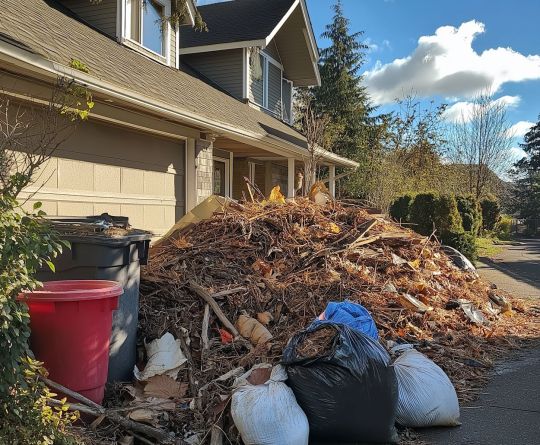
The Seven Recycling Codes Explained 1: PET or PETE (Polyethylene Terephthalate)
Commonly found in drink bottles and food containers, PET is one of the most widely recycled plastics. It’s lightweight yet strong, making it ideal for packaging.
Recyclability: Yes Uses of Recycled Material: New containers, clothing fibers 2: HDPE (High-Density Polyethylene)
This type is often used for milk jugs, detergent bottles, and some plastic bags due to its durability.
youtube
Recyclability: Yes Uses of Recycled Material: Pipes, plastic lumber 3: PVC (Polyvinyl Chloride)
PVC is commonly seen in pipes and vinyl siding but isn’t typically accepted in curbside recycling programs.

Recyclability: Limited Uses of Recycled Material: Flooring tiles, new pipes 4: LDPE (Low-Density Polyethylene)
Often used for shopping bags and some food wraps, LDPE isn’t widely accepted in curbside pickup but can be recycled through specific programs.
Recyclability: Limited Uses of Recycled Material: Floor tiles, shipping envelopes 5: PP (Polypropylene) junk removal Rapid Haul Away LLC
Used in yogurt containers and straws, polypropylene has a higher melting point compared to others.
Recyclability: Yes Uses of Recycled Material: Brooms, bins 6: PS (Polystyrene)
Commonly known as Styrofoam, polystyrene is not recyclable in many areas due to its lightweight nature.
youtube

Recyclability: No Alternative Disposal Methods: Junk pickup services for large quantities 7: Other (Various Plastics)
This category includes various plastics that don’t fit into the other six categories. Their recyclability varies widely based on local regulations.
2 notes
·
View notes
Text
FIBC Liners Bags
Alpine FIBC PVT.LTD. is a best manufacturer, exporters and suppliers of high quality FIBC Liners & Container FIBC Liners Bags in India, USA, Germany, France, UK, Italy, Canada, Spain, Netherlands, Portugal, Greece, Sweden, Argentina, Chile, Poland. A bulk bag can be fitted with an inner bag, which we call a liner. This liner provides additional protective properties against air and water vapor migration and the effect of light. Alpine FIBC can manufacture liners in the following materials: LDPE, LLDPE, MDPE, HDPE, PA, EVOH or aluminum. Loose, Glued, Tabbed, Stitched Liners, EVOH Liner, Baffle Liner, Aluminum, Foil liner, Conductive, Antistatic liner.
#FIBC Liners Bags#FIBC Liners Bags Manufacturers#FIBC Liners Bags in India#Container FIBC Liners Bags
2 notes
·
View notes
Text
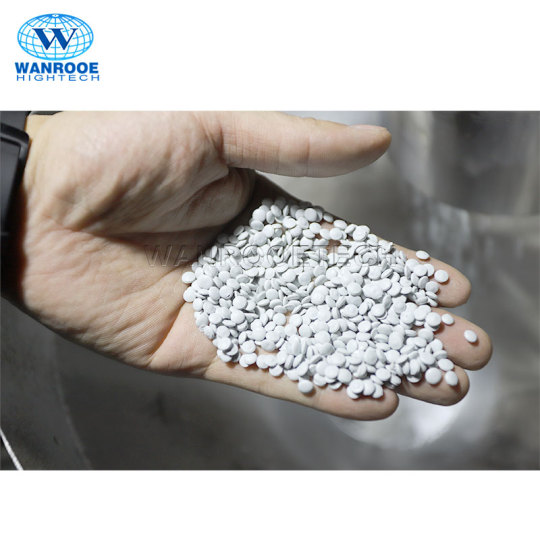
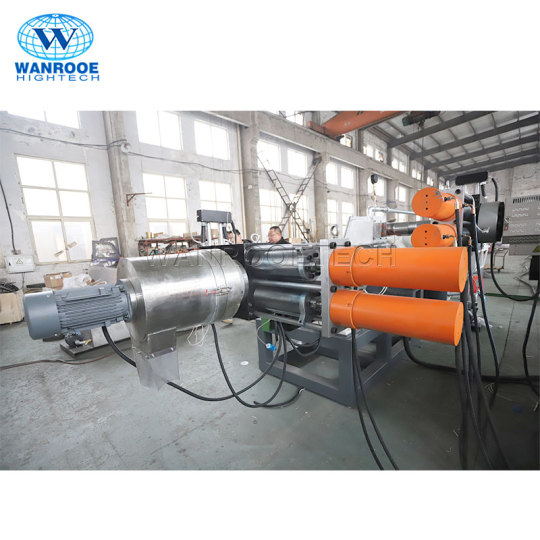
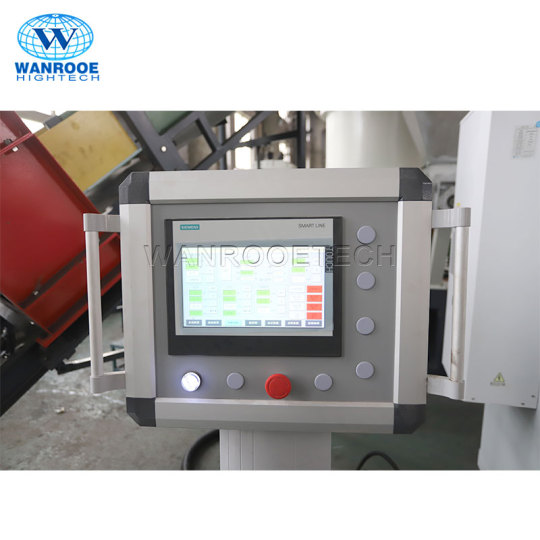
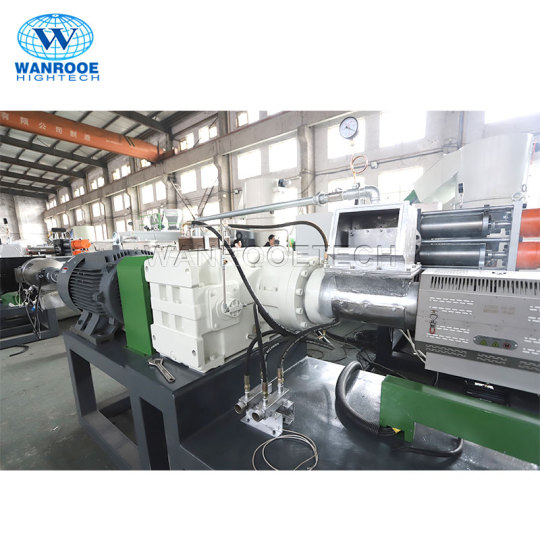
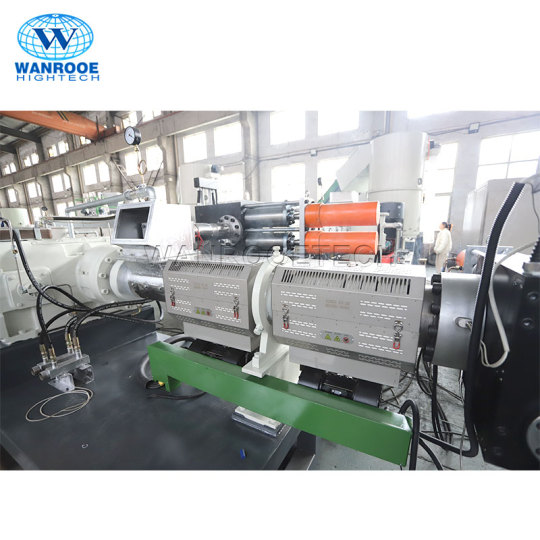
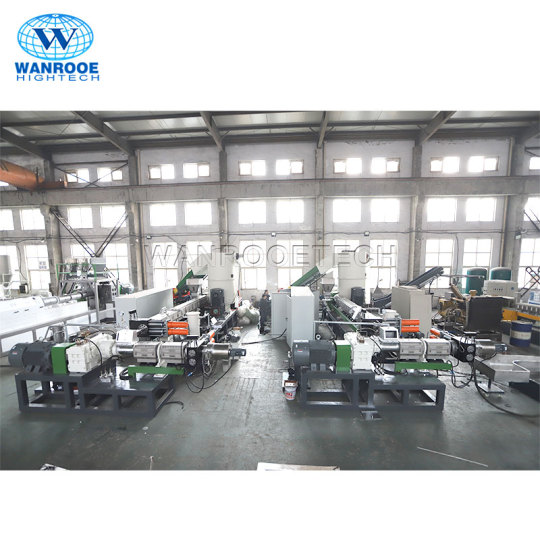
Double Stage PP PE Plastic Film Woven Bag Plastic Granulating Line is double stage plastic regenerative pelletizer, which is suitable for many kinds of plastic waste materials recycling and making pellets, such as PE, HDPE, LDPE, PP, BOPP plastic film, bag,fiber,rope scrap material and etc. The film can be pressed in the compressor and then be pelletized. 1.Applicable plastic materials: PE, HDPE, LDPE, PP, BOPP, PET, PA/Nylon, etc. 2.Material shapes: film, bag,fiber,rope scrap. 3.Material types: rolls, loose, bundled. 4.Material comes from offcut, industry defective materials, washed materials and printed materials. Note: depending on different material properties, various downstream equipments are needed.
1 note
·
View note
Text
Points to Remember Before Purchasing Plastic Grow Bags for Your Plants.
What is Grow Bags? Now a days Grow Bags plays a vital role to growing your pants. Plastic grow bags have become a popular choice for gardeners. It provides excellent aeration and drainage for strong healthy root systems. The eco-friendly design makes it reusable and can be folded flat for storage. Plant grow bags helps for better plant health and proper drainage. It is also highly recommended…
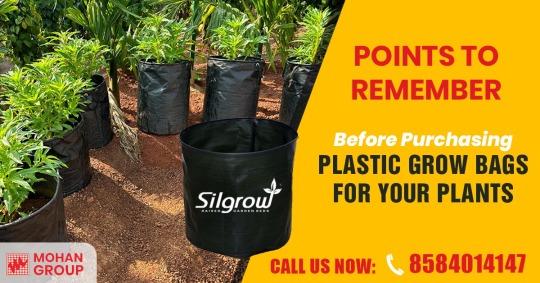
View On WordPress
0 notes
Text
Japan Biodegradable Films Market Competitive Landscape: Forecast to 2035
The Prophecy Market Insights has officially released the Biodegradable Films Market, By Material (Bio-LDPE (Low Density Polyethylene), Bio-MDPE (Low Density Polyethylene), Bio-HDPE (Low Density Polyethylene), Bio-based PLA (Polylactic Acid), and Others), By Thickness (Up to 1 mil, 1-3 mil, and Above 3 mil), By Application (Bags, Mulch Films, Wrapping, Films Liners, and Others (Sheets, etc.)), By End-user (Food & Beverages, Healthcare, Personal Care & Cosmetics, Agriculture, Waste Management, and Others), and By Region (North America, Europe, Asia Pacific, Latin America, and Middle East & Africa) - Trends, Analysis, and Forecast till 2029 Study, a comprehensive report spanning over 150 pages. This in-depth analysis outlines the current market landscape, product scope, and long-term projections from 2025 to 2035. The study provides strategic segmentation by key regions, offering valuable insights into regional dynamics and emerging opportunities. As the market continues to evolve, the Japan Biodegradable Films Market is experiencing accelerated growth and expanding its global presence, driven by innovation and increased demand across multiple sectors. Request PDF Sample Copy of Report:https://www.prophecymarketinsights.com/market_insight/Insight/request-sample/4398Major companies profiled in Japan Biodegradable Films Market are: Taghleef Industries Group Cortec Corporation Clondalkin Group Storopack Inc. Futamura Group Inc. Accredo Packaging Inc. POLYNOVA Industries Inc. Transilwrap Co. Tipa Corporation and Plastiroll Oy Ltd. The report’s goal is to provide in-depth industry information to assist decision-makers make crucial investment decisions while also identifying potential gaps and developments in By Material - Bio-LDPE (Low Density Polyethylene), Bio-MDPE (Low Density Polyethylene), Bio-HDPE (Low Density Polyethylene), Bio-based PLA (Polylactic Acid), and Others By Thickness - Up to 1 mil, 1-3 mil, and Above 3 mil By Application - Bags, Mulch Films, Wrapping, Films Liners, and Others (Sheets, etc.) By End-user - Food & Beverages, Healthcare, Personal Care & Cosmetics, Agriculture, Waste Management, and Others. To accomplish this goal, the report traces the market’s history and forecasts growth by geography. It consists of technological innovation, future technologies, and technical progress in the industry. To get a clear understanding of facts and statistics, the study defines, describes, and analyses the sales volume, value, market share, competition landscape, and SWOT analysis. Have different Market Scope & Business Objectives; Enquire for customized study: https://www.prophecymarketinsights.com/market_insight/Insight/request-customization/4398 Global Japan Biodegradable Films Market -Regional Analysis North America: United States of America (US), Canada, and Mexico. South & Central America: Argentina, Chile, Colombia, and Brazil. Middle East & Africa: Kingdom of Saudi Arabia, United Arab Emirates, Turkey, Israel, Egypt, and South Africa. Europe: the UK, France, Italy, Germany, Spain, Nordics, BALTIC Countries, Russia, Austria, and the Rest of Europe. Asia: India, China, Japan, South Korea, Taiwan, Southeast Asia (Singapore, Thailand, Malaysia, Indonesia, Philippines & Vietnam, etc.) & Rest Oceania: Australia & New Zealand Get 30% Discount on Japan Biodegradable Films Market Report https://www.prophecymarketinsights.com/market_insight/Insight/request-discount/4398 Japan Biodegradable Films Market Research Objectives: Focuses on the key manufacturers, to define, pronounce and examine the value, sales volume, market share, market competition landscape, SWOT analysis, and development plans in the next few years. To share comprehensive information about the key factors influencing the growth of the market (opportunities, drivers, growth potential, industry-specific challenges and risks). To analyze the with respect to individual future prospects, growth trends and their involvement to the total market. To analyze
reasonable developments such as agreements, expansions new product launches, and acquisitions in the market. To deliberately profile the key players and systematically examine their growth strategies. FIVE FORCES & PESTLE ANALYSIS: Five forces analysis-the threat of new entrants, the threat of substitutes, the threat of competition, and the bargaining power of suppliers and buyers-are carried out to better understand market circumstances. Political (Political policy and stability as well as trade, fiscal, and taxation policies) Economical (Interest rates, employment or unemployment rates, raw material costs, and foreign exchange rates) Social (Changing family demographics, education levels, cultural trends, attitude changes, and changes in lifestyles) Technological (Changes in digital or mobile technology, automation, research, and development) Legal (Employment legislation, consumer law, health, and safety, international as well as trade regulation and restrictions) Environmental (Climate, recycling procedures, carbon footprint, waste disposal, and sustainability) Get customized reporthttps://www.prophecymarketinsights.com/market_insight/Insight/request-customization/4398 Points Covered in Table of Content of Global Personal Care Services Market: Chapter 01 - Personal Care Services Executive Summary Chapter 02 - Market Overview Chapter 03 - Key Success Factors Chapter 04 - Global Japan Biodegradable Films Market - Pricing Analysis Chapter 05 - Global Japan Biodegradable Films Market Background or History Chapter 06 - Global Japan Biodegradable Films Market Segmentation (e.g. Type, Application) Chapter 07 - Key and Emerging Countries Analysis Worldwide Personal Care Services Market Chapter 08 - Global Japan Biodegradable Films Market Structure & worth Analysis Chapter 09 - Global Japan Biodegradable Films Market Competitive Analysis & Challenges Chapter 10 - Assumptions and Acronyms Chapter 11 - Japan Biodegradable Films Market Research Method Personal Care Services Thank you for reading this post. You may also obtain report versions by area, such as North America, LATAM, Europe, Japan, Australia, or Southeast Asia, or by chapter. Author: Authored by Shweta.R, Business Development Specialist at Prophecy Market Insights. This comprehensive analysis is grounded in an extensive blend of primary interviews, industry expert consultations, and in-depth secondary research. It provides strategic insights into the evolving dynamics, competitive landscape, and emerging opportunities within the global Japan Biodegradable Films Market. About Us: Prophecy Market Insights is a leading provider of market research services, offering insightful and actionable reports to clients across various industries. With a team of experienced analysts and researchers, Prophecy Market Insights provides accurate and reliable market intelligence, helping businesses make informed decisions and stay ahead of the competition. The company's research reports cover a wide range of topics, including industry trends, market size, growth opportunities, competitive landscape, and more. Prophecy Market Insights is committed to delivering high-quality research services that help clients achieve their strategic goals and objectives. Contact: Prophecy Market Insights US toll free: +1 689 305 3270 Rest of world: + 91 7775049802 Email: [email protected] We're here to deliver insights that drive decisions.
0 notes
Text
Eco-Conscious & Quality-Driven: Exploring the Best in Bags and Packaging Solutions
In today’s fast-paced world, packaging solutions play a vital role not just in utility, but also in sustainability and branding. From carrying daily waste to preserving food freshness, the demand for high-quality packaging materials has never been higher. Whether you're a household, a restaurant, or a retail business in the UAE, knowing where to get premium products like black garbage bags, aluminum foil containers, or fresh produce bags can make all the difference. This blog delves into top packaging essentials and sheds light on the leading plastic bag manufacturers in Ajman and paper bag manufacturers who are reshaping packaging with quality and eco-conscious practices.

The Essential Role of Black Garbage Bags
Black garbage bag are a staple in homes, businesses, and public facilities. Their strength, opacity, and capacity to hold waste securely make them a reliable solution for waste disposal.
Why Black Garbage Bags Matter:
Durability: Made from high-density polyethylene (HDPE) or low-density polyethylene (LDPE), they resist tears and punctures.
Odor Control: Many are treated to trap unpleasant odors.
Variety of Sizes: Suitable for household bins, industrial drums, and commercial use.
If you're managing a property or a cleaning service in the UAE, having access to premium black garbage bags in bulk is essential. Many plastic bag manufacturers in Ajman provide customizable options that meet health and environmental standards.
Plastic Bag Manufacturers in Ajman: Innovation Meets Efficiency
Ajman is one of the growing industrial hubs in the UAE, especially renowned for its robust plastic manufacturing sector. The plastic bag manufacturers in Ajman are known for combining durability, custom design, and sustainability into their products.
What Makes Them Stand Out:
Custom Branding: Perfect for retail, supermarket chains, and food services.
Eco-Friendly Materials: Many now offer biodegradable and recyclable options.
Large-Scale Supply: Seamlessly cater to bulk and commercial orders.
From T-shirt bags to ziplock pouches, Ajman’s manufacturers continue to meet diverse packaging demands with modern technology and global quality standards.
Aluminum Foil Containers: A Kitchen Essential
Whether you're a home cook or running a catering service, aluminum foil container are indispensable. Their ability to retain heat, resist moisture, and offer convenient storage makes them a top choice for packaging and takeaway.
Key Benefits:
Food-Safe: Non-toxic and resistant to bacterial growth.
Convenient: Oven-safe and easy to transport.
Eco-Friendly: 100% recyclable and sustainable when properly disposed.
Cafés, bakeries, and tiffin services throughout the UAE rely on high-quality aluminum containers to keep food warm and fresh. Their lightweight yet strong design also supports eco-packaging efforts.
Fresh Produce Bags: The Unsung Hero of Food Storage
Preserving the freshness of fruits and vegetables is crucial for grocery stores, home kitchens, and delivery services. Fresh produce bags are designed specifically for this purpose.
Why Fresh Produce Bags Are Ideal:
Breathable Material: Allows air circulation to reduce moisture build-up.
Transparent Design: Offers visibility of contents without opening.
Lightweight & Durable: Minimizes waste while offering protection.
With the rise of online grocery platforms and organic farmers markets, these bags are now more important than ever. Retailers often prefer suppliers who can provide compostable versions, aligning with sustainable practices.
Paper Bag Manufacturers: The Rise of Sustainable Packaging
As the world leans towards eco-friendly alternatives, paper bag manufacturer are taking center stage in retail and hospitality industries. Whether for shopping, takeout, or gifting, paper bags offer a biodegradable and brandable solution.
Features That Make Paper Bags Popular:
Environmentally Safe: Easily recyclable and decomposable.
Elegant Appearance: Adds a premium feel to products.
Customizable: Ideal for printing logos, designs, and promotional messages.
In cities like Dubai, Abu Dhabi, and Ajman, paper bag manufacturers have grown in reputation for delivering bulk orders for malls, boutiques, restaurants, and events.
Packaging Trends Shaping the UAE Market
As sustainability becomes a global concern, UAE consumers and businesses are rapidly adopting greener alternatives in packaging. Some emerging trends include:
Biodegradable Bags: Made from cornstarch or other natural materials.
Reusable Packaging: Encouraging consumers to reduce single-use waste.
Smart Packaging: Incorporating QR codes and temperature indicators.
Minimalist Designs: Focused on simplicity and environmental awareness.
Manufacturers across Ajman, Dubai, and Sharjah are already integrating these features into their product lines, offering businesses eco-conscious solutions that enhance customer loyalty.
Choosing the Right Packaging Partner
Whether you are a retailer, foodservice provider, or hospitality brand, your packaging choices affect customer experience and environmental impact. Look for a packaging provider that offers:
Product Variety: From black garbage bags to paper shopping bags.
Customization: Tailored solutions for branding and functionality.
Compliance: Certifications for food safety, quality control, and sustainability.
Reliable Delivery: Timely supply chain to meet your business demands.
The packaging industry in the UAE is rapidly evolving to meet the dual needs of functionality and sustainability. From aluminum foil containers to fresh produce bags, and from plastic bag manufacturers in Ajman to premium paper bag manufacturers, the shift toward quality and eco-consciousness is clear.
Making the right packaging choice doesn’t just enhance your product it also shows your commitment to responsible business practices. Whether you're streamlining waste management with black garbage bags, preserving freshness with produce bags, or switching to paper alternatives, there’s a wealth of options available right here in the UAE.
#PackagingSolutionsUAE#PlasticBagsAjman#PaperBagManufacturers#EcoFriendlyPackaging#AluminumFoilContainers
0 notes
Text
A Comprehensive Guide to Plastic Bags: Types, Uses, and Best Practices for Disposal
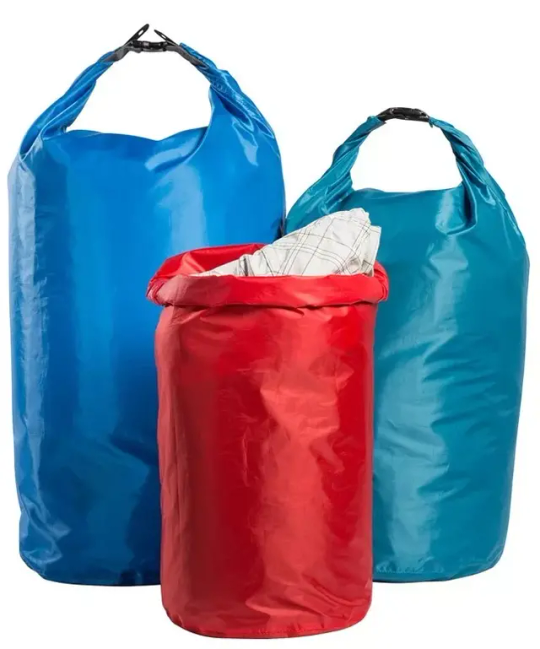
Plastic bags are one of the most common forms of packaging used across various industries today. These versatile bags are utilised for everything from grocery shopping to industrial packaging, providing a convenient and cost-effective solution for many different purposes. However, with growing concerns about environmental sustainability, it's crucial to examine the different types of plastic bags, their uses, and how they can be disposed of responsibly. In this article, we will explore the various types of plastic bags available, their applications, and best practices for reducing their environmental impact.
1. Types of Plastic Bags
Traditional Plastic Bags (Low-Density Polyethylene)
Low-density polyethylene (LDPE) bags, commonly known as traditional plastic bags, are the thin, flexible bags used in grocery stores and retail outlets. These bags are lightweight, easy to carry, and cheap to produce. Despite their convenience, they are often criticised for their environmental impact, as they are single-use and can take hundreds of years to decompose in landfills.
High-Density Polyethylene Bags (HDPE)
High-density polyethylene (HDPE) bags are thicker than LDPE bags and are commonly used for packaging items like frozen foods, milk, and other grocery items. They are stronger than traditional plastic bags and are often preferred for heavier-duty tasks. HDPE bags are slightly more durable but still present challenges for disposal, especially when they are used for single-use purposes.
Biodegradable Plastic Bags
As the demand for more eco-friendly packaging solutions rises, biodegradable plastic bags have been introduced. These bags are designed to break down more quickly in the environment compared to traditional plastic. While they offer a more sustainable alternative, the term "biodegradable" can be misleading, as the breakdown process can still take years depending on the conditions. Nonetheless, these bags do help to reduce plastic waste in some circumstances, particularly in landfills.
Reusable Plastic Bags
Reusable plastic bags are a more durable version of traditional plastic bags, designed for repeated use. They are typically made from thicker plastic or woven materials, which increases their strength. Many retailers offer these bags as an alternative to single-use plastic bags, and they can be used multiple times, reducing the need for disposable bags. However, these bags still contribute to plastic consumption, and their environmental impact depends on how often they are reused and how they are disposed of at the end of their life.
2. Common Uses of Plastic Bags
Retail and Grocery Shopping
The most common use of plastic bags is in retail and grocery shopping. Most grocery stores offer plastic bags to customers for packing their groceries. These bags are lightweight, cost-effective, and easy to handle. Despite the growing popularity of reusable bags, plastic bags remain the primary choice for many shoppers due to their convenience.
Industrial and Commercial Packaging
In addition to retail use, plastic bags are commonly used in industrial and commercial settings. They are ideal for packaging bulk items like textiles, food products, and medical supplies. Their ability to protect products from dust, moisture, and contamination makes them a staple in packaging for a wide range of industries, including manufacturing, agriculture, and pharmaceuticals.
Food Packaging
Plastic bags are extensively used in the food industry for packaging items such as bread, snacks, and frozen foods. The bags provide an efficient way to preserve the freshness of food products while protecting them from contamination. With their low cost and ability to seal in freshness, plastic bags remain one of the most popular choices for food packaging.
Waste Management
Plastic bags are also commonly used in waste management. Many people use plastic bags to collect household waste, yard debris, and recyclables. Their durability makes them a convenient tool for trash collection, although many cities and municipalities are moving away from plastic waste bags in favour of more eco-friendly alternatives.
3. The Environmental Impact of Plastic Bags
Non-Biodegradability and Persistence
One of the biggest environmental concerns associated with plastic bags is their non-biodegradability. Plastic bags can take up to 1,000 years to decompose, posing significant environmental challenges. When plastic bags are improperly disposed of, they can end up in oceans, rivers, and landscapes, where they pose a threat to wildlife. Marine animals, in particular, can mistake plastic bags for food, leading to ingestion and potentially fatal consequences.
Contribution to Landfill Overflow
Plastic bags contribute to the growing issue of landfill overflow. Due to their lightweight nature, they often get carried by the wind, and it’s difficult to manage them in landfill sites. As a result, plastic bags accumulate in landfills and take up valuable space, where they can persist for centuries without breaking down.
Pollution and Ecosystem Damage
The presence of plastic bags in natural environments can also lead to pollution and long-term ecosystem damage. As plastic bags break down into smaller microplastics, they can enter the food chain, affecting both wildlife and human health. Microplastics have been found in the tissues of marine organisms and have even made their way into human food sources, causing growing concern about their impact on health and the environment.
4. Best Practices for Disposal and Reducing Plastic Waste
Recycling Plastic Bags
The most effective way to manage the environmental impact of plastic bags is through recycling. Many recycling centres accept plastic bags, which can be processed and repurposed into new products. It's important to check with local recycling facilities to determine whether they accept plastic bags, as some may not due to the difficulty in processing them. When recycling plastic bags, make sure to clean and dry them to avoid contamination.
Reuse Plastic Bags
Instead of discarding plastic bags after a single use, consider reusing them for tasks around the house. Plastic bags can be used for packing, storing items, or as waste liners in small trash cans. By reusing plastic bags, you extend their life cycle and reduce the demand for new bags.
Switch to Eco-Friendly Alternatives
One of the best ways to reduce the environmental impact of plastic bags is to switch to eco-friendly alternatives. Reusable fabric bags, compostable bags, and biodegradable options provide more sustainable choices for packaging and carrying goods. Many grocery stores and retailers now offer discounts or incentives for customers who bring their reusable bags, which helps promote environmentally conscious practices.
Proper Disposal
If you must dispose of plastic bags, it's important to do so responsibly. Avoid throwing them in outdoor trash cans or on the ground, where they can become a hazard to the environment. Instead, take your plastic bags to designated recycling centres or participate in local collection programmes for plastic waste.
5. Legislation and Efforts to Reduce Plastic Bag Use
Government Bans and Regulations
In many countries, there has been increasing pressure to reduce the use of plastic bags due to their environmental impact. Several regions have introduced bans or restrictions on single-use plastic bags. These bans encourage businesses and consumers to switch to reusable bags or alternative packaging solutions. Some countries have also introduced fees for plastic bags, which helps to reduce consumption and incentivise the use of reusable options.
Public Awareness Campaigns
Public awareness campaigns are crucial in educating people about the environmental dangers of plastic bags and the importance of reducing plastic waste. Many environmental organisations work tirelessly to promote sustainable alternatives to plastic bags, encouraging individuals to make conscious decisions when it comes to shopping and packaging. These campaigns have led to a greater focus on reducing plastic consumption and improving waste management practices.
Conclusion
Plastic bags are a widely used and versatile packaging solution, but they also pose significant environmental challenges. Their non-biodegradability, contribution to landfill overflow, and the damage they cause to ecosystems make them a key target for sustainability efforts. However, with responsible recycling, reusing, and switching to eco-friendly alternatives, it’s possible to reduce the environmental impact of plastic bags. As individuals, businesses, and governments continue to promote awareness and take action to reduce plastic waste, we can work together to protect our planet for future generations. By being mindful of our choices and practising sustainable habits, we can all contribute to reducing the harm caused by plastic bags.
0 notes
Text
The Ultimate Guide to Grocery Bags: Sustainable, Durable & Convenient Solutions
When you think of groceries in a bag, durability, convenience, and sustainability come to mind. At Oceanic6 Packaging, we specialize in high-quality bags for food shopping that cater to retailers, supermarkets, and eco-conscious consumers. Whether you need sturdy food shopping bags for daily use or bulk purchases, our range offers the perfect blend of functionality and environmental responsibility.
Grocery bags are more than just carriers—they play a crucial role in reducing plastic waste, enhancing brand visibility, and ensuring safe transportation of goods. In this comprehensive guide, we’ll explore the different types of grocery bags, their benefits, and why choosing the right supplier matters.
Why Quality Grocery Bags Matter
The right food shopping bags can make a significant difference in:
Customer Experience – Strong handles and tear-resistant material prevent spills.
Branding Opportunities – Custom-printed bags act as mobile advertisements.
Environmental Impact – Reusable and biodegradable options reduce plastic pollution.
With growing awareness of sustainability, businesses must invest in reliable bags for food shopping that align with eco-friendly practices.
Types of Grocery Bags We Offer
1. Plastic Grocery Bags (HDPE/LDPE)
Lightweight & Cost-Effective – Ideal for high-volume retail use.
Waterproof & Durable – Protects contents from moisture.
Customizable Printing – Brand your store name or logo.
2. Reusable Non-Woven Bags
Eco-Friendly Alternative – Reduces single-use plastic dependency.
Long-Lasting & Washable – Can be used hundreds of times.
Fashionable & Functional – Available in multiple colors and designs.
3. Paper Grocery Bags
Biodegradable & Recyclable – Perfect for eco-conscious brands.
Sturdy & Versatile – Handles heavy items like canned goods.
Premium Look & Feel – Great for boutique grocery stores.
4. Jute & Cotton Bags
100% Natural Material – Compostable and sustainable.
High Load Capacity – Supports heavy groceries without tearing.
Trendy & Durable – Popular among organic stores and farmers' markets.
Benefits of Choosing Oceanic6 Packaging for Your Grocery Bags
1. Superior Quality & Durability
Our bags for food shopping are rigorously tested for strength, ensuring they won’t rip or tear under normal use.
2. Custom Branding Options
Logo Printing – Boost brand recognition with custom designs.
Color Variations – Match your store’s aesthetic.
3. Bulk Order Discounts
We offer competitive pricing for wholesale buyers, making it cost-effective for supermarkets and retail chains.
4. Fast & Reliable Delivery
With an efficient supply chain, we ensure timely deliveries across India and for export orders.
Eco-Friendly Grocery Bags: A Step Towards Sustainability
Single-use plastics are a major environmental concern, leading many countries to ban them. Switching to reusable groceries in a bag options like non-woven, jute, or paper helps:
Reduce Landfill Waste – Biodegradable materials break down naturally.
Lower Carbon Footprint – Sustainable production processes.
Meet Regulatory Compliance – Align with global plastic reduction policies.
How to Choose the Right Grocery Bag for Your Business
Consider these factors when selecting food shopping bags: ✔ Type of Products Sold – Heavy items need reinforced handles. ✔ Customer Preferences – Eco-conscious buyers favor reusable bags. ✔ Budget & Volume – Plastic bags are cheaper for high turnover. ✔ Branding Needs – Custom prints enhance marketing.
Conclusion: Elevate Your Retail Experience with the Right Grocery Bags
Whether you run a supermarket, local grocery store, or organic shop, the right bags for food shopping enhance customer satisfaction and promote sustainability. Oceanic6 Packaging provides top-tier solutions—from affordable plastic bags to premium jute and non-woven options.
Order today and make the switch to durable, branded, and eco-friendly groceries in a bag that your customers will love!
#groceries in a bag#bags for food shopping#food shopping bags#corrugated box manufacturers#packaging manufacturers#packaging design services#packaging#custom packaging solution
0 notes
Text
How Technological Advancements Are Transforming Freezer Packaging
The global freezer bags market is witnessing a steady rise in value, fueled by changing consumer lifestyles, increased demand for frozen food, and the expanding use of advanced packaging technologies. According to the latest industry analysis, the market was valued at US$ 4.3 billion in 2023 and is projected to reach US$ 5.9 billion by 2032, growing at a compound annual growth rate (CAGR) of 3.7% over the forecast period.
Request a Sample Report Copy
Understanding Freezer Bags: More Than Just Plastic
Freezer bags are a staple in households and industries for preserving food quality. These bags are typically made from materials like HDPE, LDPE, or MDPE and feature durable, sealable designs to prevent leaks and contamination. Unlike standard storage bags, freezer bags are thicker and more resistant to cold temperatures, making them ideal for storing items like meat, vegetables, poultry, seafood, and even pharmaceuticals.
With the growth of the frozen food industry and heightened awareness of food safety, demand for these bags has expanded beyond kitchens into pharmaceutical labs and medical facilities.
Key Growth Drivers
1. Surge in Demand for Frozen Food
Frozen food products—including fruits, vegetables, meat, and ready-to-eat meals—are becoming increasingly popular due to their convenience and long shelf life. These items are often packaged in freezer bags that maintain freshness, flavor, and nutritional value. The rise in dual-income households and the busy lifestyles of urban populations have led to a higher preference for processed and ready-to-eat meals, further boosting demand.
2. Rise of Reusable and Resealable Packaging
A significant trend shaping the market is the shift toward reusable zipper freezer bags. These products appeal to eco-conscious consumers looking for sustainable yet durable storage solutions. Equipped with advanced sealability features, they provide effective leak protection and preserve food quality over multiple uses. Their increasing popularity is expected to play a critical role in the market’s expansion, particularly in food, beverage, and pharmaceutical sectors.
3. Technological Advancements in Packaging
Ongoing innovations are revolutionizing the freezer bags industry. From vacuum-sealed pouches to cryogenic packaging for ultra-low temperature storage, manufacturers are enhancing durability, safety, and environmental sustainability. For example, the partnership between Sabic, Estiko Packaging Solutions, and Coldwater Prawns led to a sustainable multilayer film pouch with 60% ocean-bound plastic—a model of next-gen packaging.
Industry Applications: Food & Pharma
While the food industry is the primary user of freezer bags, the pharmaceutical sector also represents a growing market. Cryogenic pouches are used to store temperature-sensitive materials such as biological samples and medical specimens. These applications demand high reliability, durability, and temperature resistance—qualities that advanced freezer bags can deliver.
In both sectors, customization is becoming increasingly common. Tailoring the design, material, and sealing mechanism of bags based on the product stored ensures optimal preservation and safety, which is especially crucial for pharmaceuticals and specialized frozen foods.
Regional Insights: North America Leads the Way
In 2023, North America held the dominant share of the global freezer bags market. The region’s growth is largely driven by high consumption of packaged food, urbanization, and an increasing working population. The U.S., in particular, has a strong demand for frozen vegetables and other frozen goods, making it a core contributor to overall market growth.
Countries like Germany, France, the UK, and Japan also represent strong markets due to their established food processing industries and growing interest in sustainable packaging solutions.
Key Players and Competitive Landscape
Major industry players are actively investing in innovation and sustainability. Companies such as S. C. Johnson & Son, The Glad Products Company, Reynolds Consumer Products, and Great American Packaging are leading the charge. For instance, in 2023, Great American Packaging introduced its OneEarth compostable and PFAS-free packaging, aligning with the increasing regulatory and consumer push toward eco-friendly products.
In addition to product innovation, mergers, acquisitions, and strategic partnerships are common growth strategies aimed at expanding geographic reach and enhancing product portfolios.
Looking Ahead: Opportunities and Challenges
While the future looks promising, the freezer bags market faces some challenges, including:
Regulatory pressure to reduce plastic waste.
The high cost of sustainable materials and technologies.
Increasing competition from biodegradable and alternative storage solutions.
However, the overall market outlook remains positive. With innovation, sustainability, and customization at the forefront, freezer bags are poised to remain essential across industries.
Conclusion
The freezer bags market is evolving rapidly, supported by technological advances, sustainability trends, and changing consumer behaviors. As more companies invest in eco-friendly and efficient storage solutions, the market is expected to grow steadily through 2032. Businesses looking to capitalize on this trend should focus on product innovation, market expansion, and sustainability, positioning themselves for long-term success in this indispensable packaging sector.
0 notes